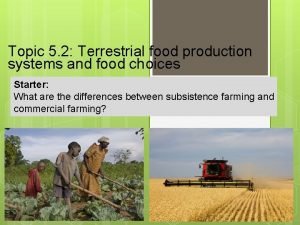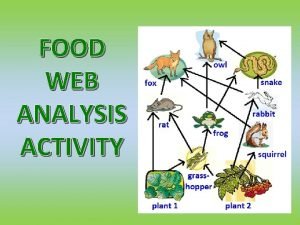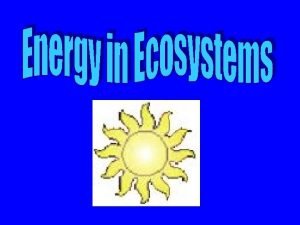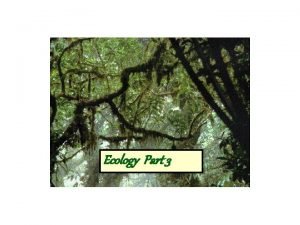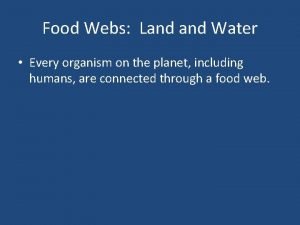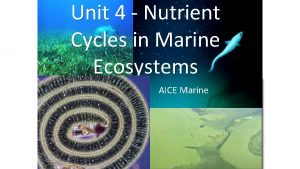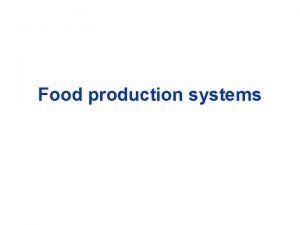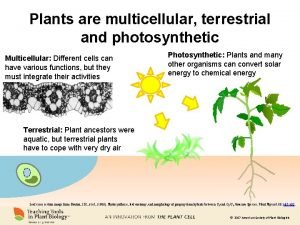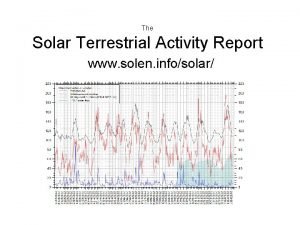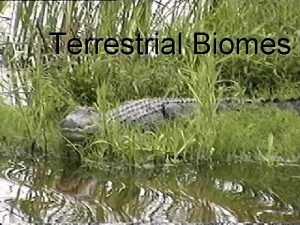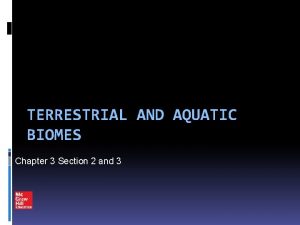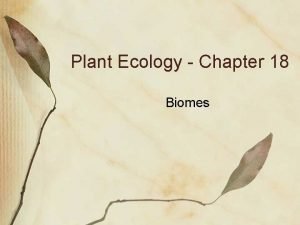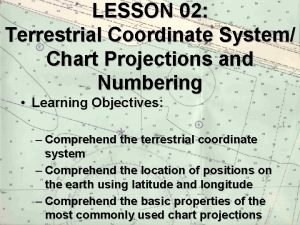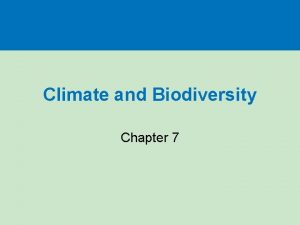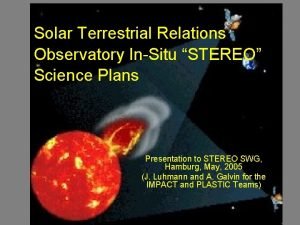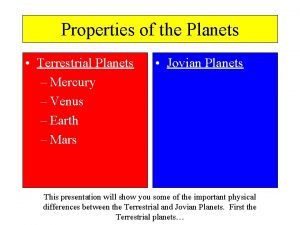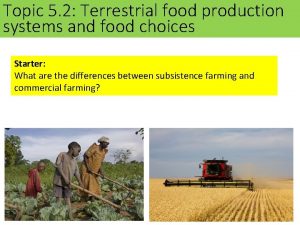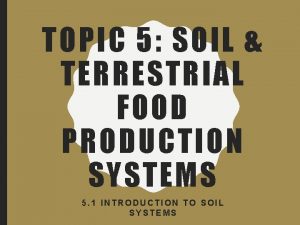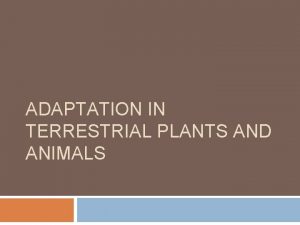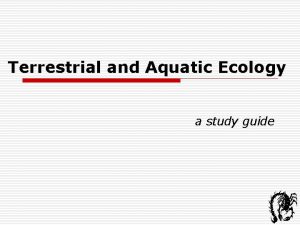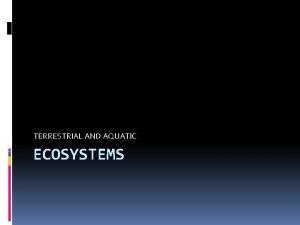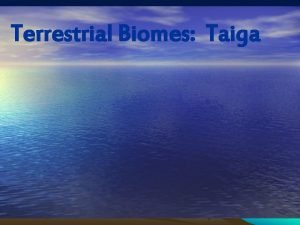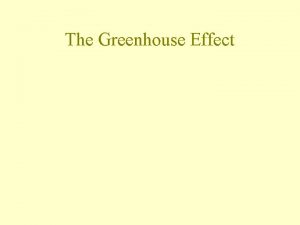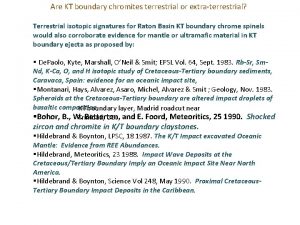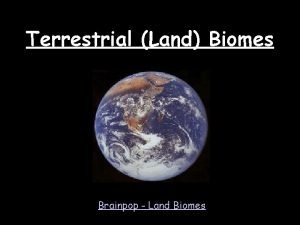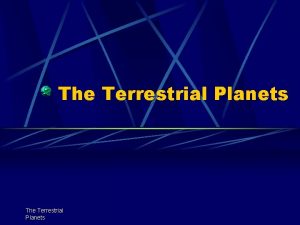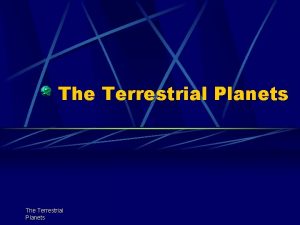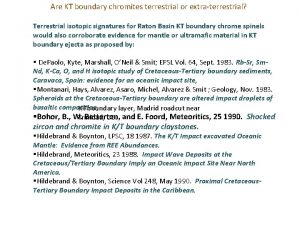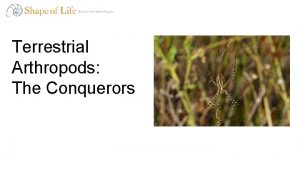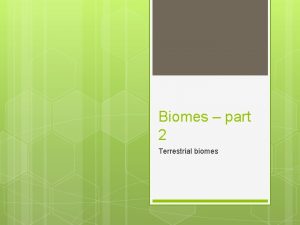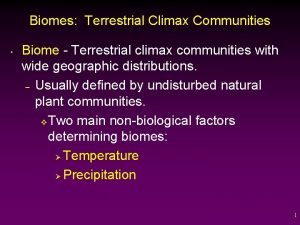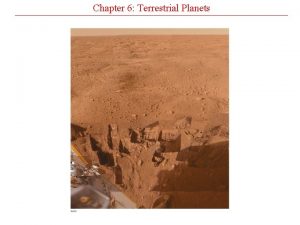5 2 Terrestrial Food Production Systems and Food
























- Slides: 24

5. 2 - Terrestrial Food Production Systems and Food Choices - TASK 2

TYPES OF FARMING SYSTEM (& Types of farming) SUBSISTENCE: the provision of food by farmers for their own families or the local community (no surplus). Vulnerable to food shortages as little is stored. Low input. CASH CROPPING: growing crops for the market, not to eat yourself. COMMERCIAL (extensive & intensive): large, profit-making scale, maximized yields. Monoculture. High levels of technology, E , and chemical input - high output. - Extensive: uses more land with a lower density of stocking or planting and lower input Intensive: uses land more intensively with high levels of input and output per unit area (animal feedlots)

TYPES OF FARMING SYSTEM (& Types of farming) PASTORAL: raising animals, usually on grass and on land that is not suitable for crops. ARABLE: growing crops on good soils to eat directly or to feed to animals MIXED: both crops and animals and is a system in itself where animal waste is used to fertilize the crops and improve soil structure and some crops are fed to the animals

SUSTAINABILITY Subsistence farming is more sustainable. Factors Commercial agriculture mostly in MEDCs Subsistence agriculture mostly in LEDCs Scale of farming Large-scale, rely heavily on machinery, chemicals and extensive use of fossil fuels Small-scale, labour intensive, chemicals to boost production Industrialization MEDCs-many working in industry, provided with food from large-scale commercial farming LEDCs-limited industry, limited job opportunities, people grow their own food Mechanization Lots of heavy machinery-damage the soil, lots of fossil fuels Draft animals(donkeys, oxen) or human power. No burning of fossil fuels. Use of manure(feces) H 2 O use Heavy water demands and large-scale irrigation Required water but used unsustainably Fossil fuel use A heavy dependence on fossil fuels (finite resource) which produces large amount of pollution Use of manual labour or draft animals does not produce as much pollution as commercial farming does

MALNUTRITION - LACKING: undernourishment, lack of calories - EXCESSIVE: overnourishment, too many calories leading to obesity - UNBALANCED: the wrong proportion of micro-nutrients, enough E but lacks essential nutrients(proteins, vitamins, minerals) Statistics: - Undernourishment- 925 million people, 2% in MEDCs, 98% in Asia, Africa, Oceania, 200 million are infants and children - Unbalanced diet- 10% of the undernourished million die each year (starvation, malnutrition, ¾ of 10% are <5 yrs old)

FOOD CHOICES EXPLAIN the 4 factors which affect a society’s food choices: - Climate: determines what will grow where on Earth (can adapt through irrigation, greenhouses) Culture and religion: some religions proscribe certain foods (Hindus do not eat beef) Politics: governments manipulate production by putting tariffs or subsidizing (EU) Socio-economic: market forces determine supply and demand in a freemarket economy

FOOD CHOICE REFLECTION Consider the food you eat on an average day. EXPLAIN which of the 4 factors affect your diet. - Climate: it is hot in Vietnam so there is a limitation in food choices. Some crops (food) do not grow here. Culture: Kimchi in Korea Age: I don’t prefer things that are bitter

RESEARCH - Find out how many calories an average person needs per day. 2700 for men and 2200 for women - Find out how much food is produced around the world, in calories per day. There is an average of 2, 790 calories of food available each day for every human - State whethere is enough food being produced to feed everyone in the world. There is enough food to feed everyone in the world but is not distributed evenly so people in LEDCs are often undernourished.

TIP for previous slide! (There is enough food to feed everyone! If you find that there was not, do some further research. )

POLITICS OF FOOD SUPPLY Summarise the information on pages 250 - 252 on the politics of food supply: - Huge differences exist between the diets of people in MEDCs and those in LEDCs - In the history of the human population, food supply has kept pace with population growth (Malthusian), but recently same are doubting that technology, efficiency and innovation will allow us to feed 9 million of population. 1. 1 billion living in poverty- increasing and getting hungrier. - degrade more land, demand more meat. - As the population increases, there is a fall in grain produced per capita

EXPLAIN your opinion regarding world food supply. How can we feed everyone? Should we try to? Example response: I think the calories intake in MEDCs per capita should be controlled. People should be educated to use land sustainably. LEDCs should either decrease their food price or provide a certain amount of free food for undernourished people.

HISTORY OF AGRICULTURE Define the following terms: - Domesticated animal: came before crop farming (dogs-sheep-goats-pigs-cattle) - Livestock: converting plant material unsuitable for human digestion systems into valued protein. (are kept and raised by human) - Arable farming: cultivating crops on viable land. (vegetables, cereals and plants that produce cloth or oil) - Harvesting: gathering a ripe crop from the fieldsa. Requires the removal of the biomass from the field, the soil and the ecosystem - Crop rotation: a way of addressing loss of soil fertility. Rotation with other crops.

HISTORY OF AGRICULTURE Explain why humans started domesticating animals before they grew crops. - Before farming, people lived by hunting wild animals. When supplies ran out, people moved on to other places. Farming made them to inhabit in one place instead of travelling to find food. They began to live in settled communities and grew crops or raised animals. - Dogs were used as hunting companions. Sheep, goats, and pigs were hunted as wild prey and domesticated to provide more reliable source. Some were used as food. Some provided wool and hides for clothing and even their bones, antlers, and teeth were used as tools and decorations.

CASE STUDY - Palm Oil What is palm oil (how is it produced)? A type of edible vegetable oil that is derived from the pal fruit, grown on the African oil palm tree In what products is palm oil used? Cooking oil, margarine, cosmetics, biofuel State which products you use have palm oil in them. Cooking oil and cosmetic goods Where is it produced and why is this so controversial? West Africa and Central America. Malaysia and Indonesia- The forests there have been cleared for palm oil Why is palm oil such a popular crop? Growing a few oil palms can bring an income for a subsistence farmer and large oil plantations and processing plants provide much needed employment Describe the effects of the high demand for palm oil on Indonesian and Malaysian biodiversity. Loss of biodiversity in rainforest

CASE STUDY 2 Choose 2 from the above table, and make notes on their similarities and differences using the named example as the focus.

CASE STUDY 2: Cereal Growing & Rice Growing Similarities Differences Cereal Growing Rice Growing - Where: Canadian Prairies - Extensive Commercial - Input: High technology and fertilizer - Output: low per hectare, high per farmer - Medium efficiency - Impacts: High loss of natural ecosystem, soil erosion, loss of biodiversity - Where: Ganges Valley - Intensive Subsistence - Input: High labour, low technology - Output: high per hectare, low per farmer - High efficiency - Impacts: High padi rice has a polyculture, stocked with fish. Also grow other crops

FARMING ENERGY BUDGET Explain the difference between: 1. Energy contained within the crop per unit area: the relative E returns from cereal and root crops, from wheat and corn, from beef or lamb. However, this calculation is problematic because it does not necessarily take into consideration just the edible portion of the food. 2. Energy efficiency of a farming system: a system with inputs, outputs, and storage that operate on a range of spatial (area) and temporal (time) scales. Here you calculate the energy it took to produce that food and deliver it to the market, including factoring in the energy cost of waste products associated with the farming system (ie – inedible portions of crop, etc)

Explain the data shown in this table, with focus on the ratio of inputs: outputs. - For all but cereal growing, efficiency is less than one (input>output) - Input > Output

CASE STUDY 3 You are required to be able to compare and contrast two differing food production systems regarding their inputs and outputs. Make notes here on either: - Intensive beef production in South America vs Extensive beef production by the Masai.

TERRESTRIAL vs AQUATIC FOOD SYSTEMS Compare the energy efficiency of terrestrial and aquatic food production systems regarding: Terrestrial System Aquatic Food System Trophic levels of food chosen 1 or 2 4 or higher E transfer between trophic levels Higher losses when it comes to skeletal waste (they have to support themselves on land) E efficiency is lower because of the E losses at each trophic level. E conversions along the food chain is more efficient Amount of sunlight absorbed/wasted Making a rather efficient use of solar E The initial intake of Solar E is less efficient because of the absorption and reflection of sunlight by water & E losses as heat are higher in water

FACTORS LEADING TO DECREASE IN AGRICULTURAL LAND State 4 factors which lead to a loss in agricultural land. - soil erosion - salinization - desertification - urbanization

INCREASING SUSTAINABILITY OUTLINE the following methods to increase sustainability of food production: 1. a. b. c. 1. a. b. 1. a. Maximising yield: Improve technology Alter what we grow and how we grow it (GMO) A new Green Revolution (Agroecology) Reducing food waste: LEDCs: food waste is mostly in production and storage (eg. no refrigeration) MEDCs: food waste is mostly in consumption (eg. buying more than needed) Monitoring and end control: By governmental and intergovernmental bodies to regulate imports and exports to reduce unsustainable agricultural practices b. By multinational and national food corporations to raise standards and practices on their supplier farms c. By individuals in NGO pressure groups

INCREASING SUSTAINABILITY 4. Changing attitudes of food and diet: a. b. c. d. Eat different crops Eat less meat Improve education about food Increase consumption of insects- big protein source that reproduces rapidly and in large cities 5. Reduce food processing, packaging and transport: a. be more aware of production efficiency, increase consumer awareness b. eg: growing tomatoes in a heated greenhouse in UK (temperate) may use more total E than growing them in the tropics and flying them into the UK.

Each of these is a prediction by the FAO about the year 2030. Put them in order of importance from highest to lowest, and explain your opinion.
 Terrestrial vs aquatic food production systems
Terrestrial vs aquatic food production systems Pre post production
Pre post production Food web analysis worksheet
Food web analysis worksheet Food chain sample
Food chain sample Taiga foodchain
Taiga foodchain Figure of food chain
Figure of food chain Nutrient cycles in marine ecosystems
Nutrient cycles in marine ecosystems Food production system example
Food production system example Terrestrial plant
Terrestrial plant Differences between aquatic and terrestrial ecosystems
Differences between aquatic and terrestrial ecosystems Rocky planet surface
Rocky planet surface Solar terrestrial activity report
Solar terrestrial activity report Characteristics of outer planets
Characteristics of outer planets Solar system inner and outer planets
Solar system inner and outer planets Example of terrestrial biome
Example of terrestrial biome Chapter 3 section 2 terrestrial biomes
Chapter 3 section 2 terrestrial biomes Terrestrial navigation example
Terrestrial navigation example Terrestrial soil
Terrestrial soil Terrestrial biomes definition
Terrestrial biomes definition Inner terrestrial planets
Inner terrestrial planets Terrestrial coordinate system
Terrestrial coordinate system Human impact on terrestrial ecosystems
Human impact on terrestrial ecosystems Events 2022
Events 2022 Solar terrestrial relations observatory
Solar terrestrial relations observatory What is a terrestrial planet
What is a terrestrial planet
